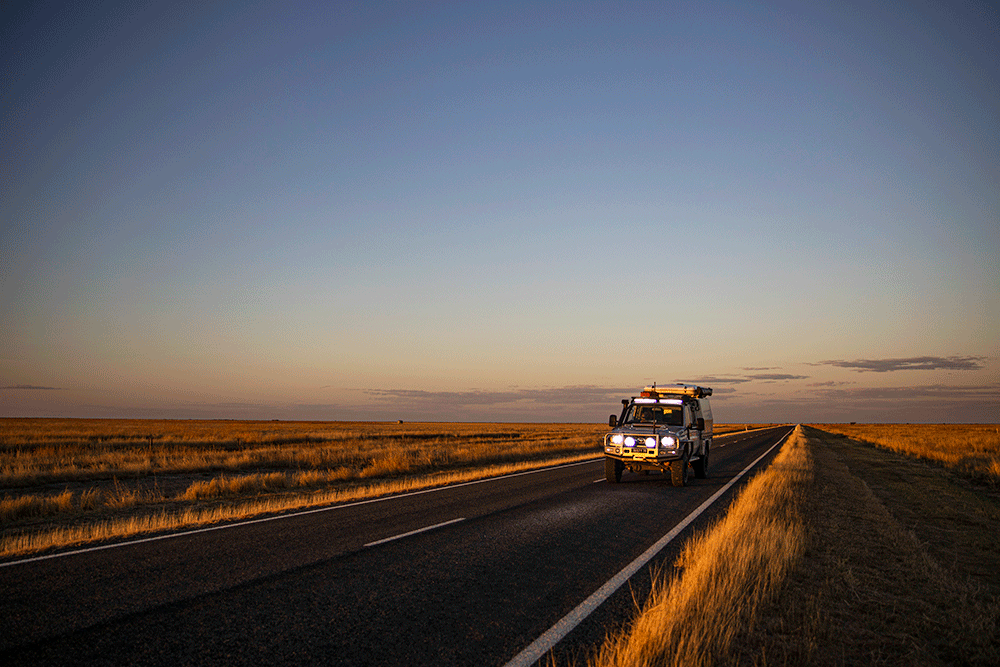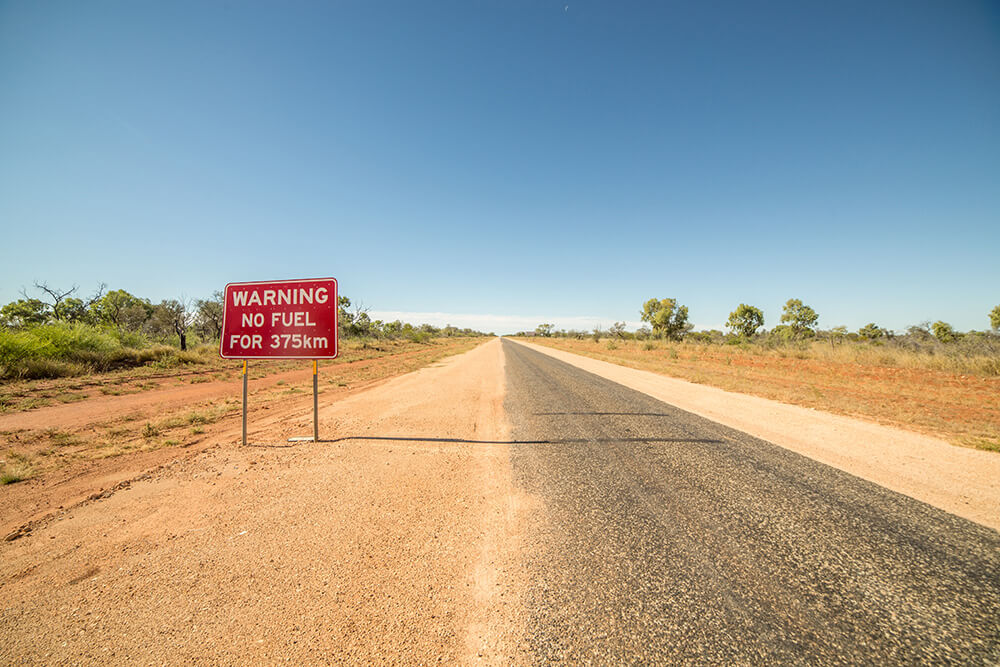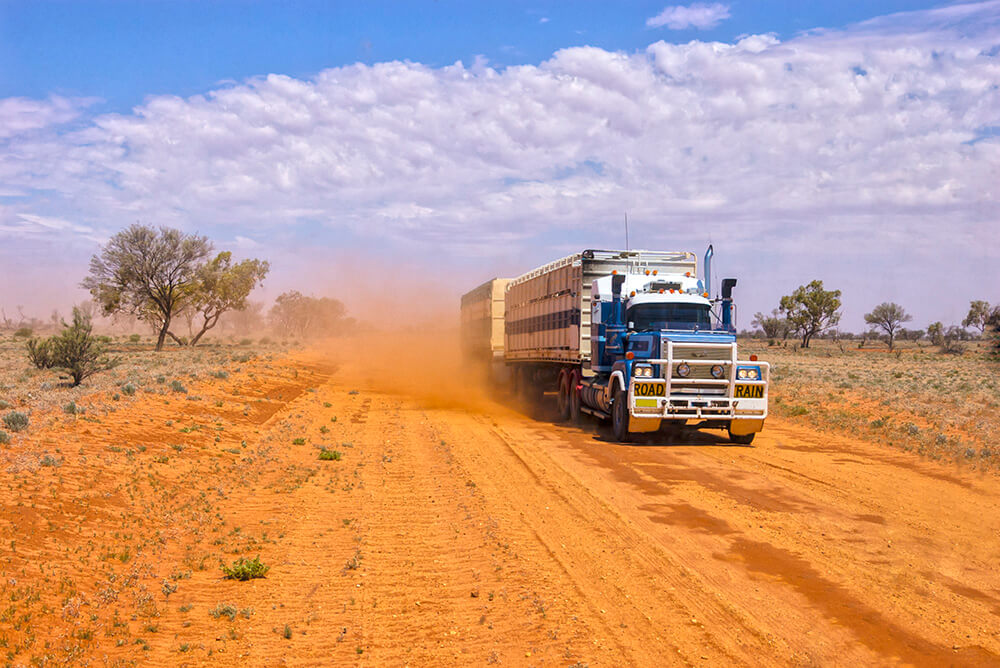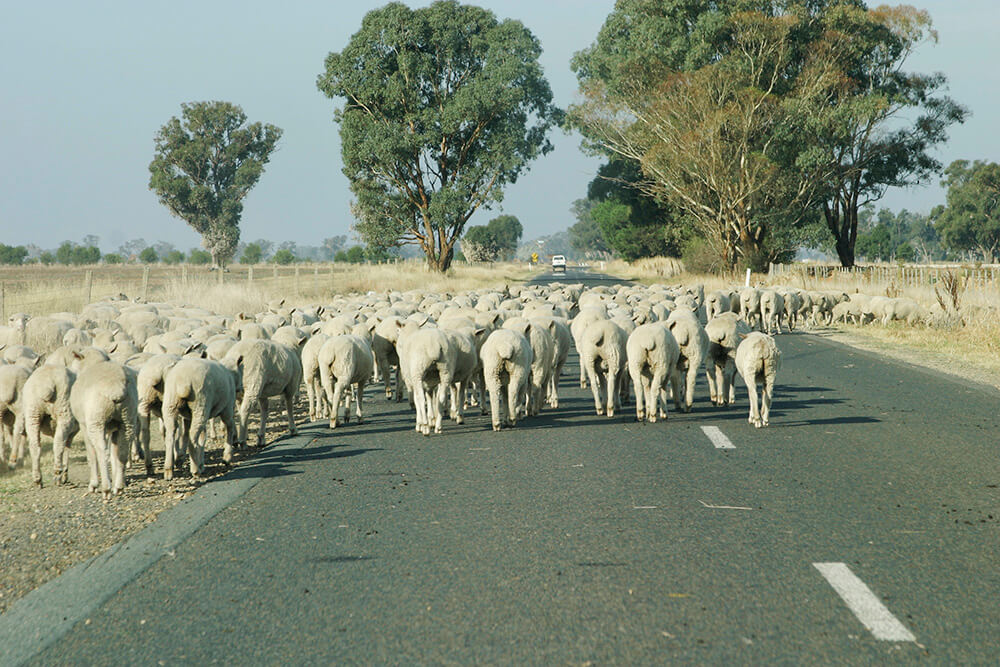Tips for driving in outback Queensland

Whether you’re a seasoned traveller or heading to the outback for the first time, follow our tips to reach your destination safely.
Plan ahead
Check driving distances between each town to ensure you have enough fuel and supplies for each leg of your journey. Use apps like RACQ’s Fair Fuel Finder or FuelMap to find petrol stations and heed ‘last fuel’ and ‘no fuel’ warning signs.
Have your car serviced before your trip and ensure your spare tyre is at the correct pressure.

Pack the essentials
Ensure you’re prepared for emergencies by packing a first aid kit, a map, tools to change a tyre, food and water.
Ensure you have adequate prescription medication with you, as outback pharmacies may not stock all medications and it may take a couple of days for medications to be delivered to town.
Mobile phones
Mobile phone reception may be patchy (or non-existent) the further you are away from town, so download off-line maps to your phone before you head off or pack a paper map.
Download the Australian Government’s Emergency+ app to use your phone’s GPS to provide critical location details to emergency services in the event of an emergency while on the road.
If you’re on an extended outback adventure it may be worth investing in a satellite phone.
Road trains and heavy vehicles
Road trains and heavy vehicles are a common sight on outback roads. Share the road safely with approaching vehicles by moving as far left as possible or pulling over while they pass.
If you have a UHF/CB radio, tune in to channel 40, the Australia-wide highway channel, for any information or instructions from the driver.

Station properties
Many roads are gated and cross cattle station properties.
The rule of thumb is to leave gates the same way as you find them, so if you find a gate closed be sure to close it again after you pass through.
Check road conditions
Visit your closest Visitor Information Centre to talk to locals about the conditions of road that lie ahead or visit Qld Traffic for information on road closures, flooding, road works, livestock on roads and other hazards.
Watch out for wildlife
Kangaroos, emus and other wildlife are most active at dawn and dusk, so it pays to be extra vigilant at those times.
Be patient with any wildlife or livestock on the road and avoid swerving if an animal wanders on to the road.

Prepare for wet weather
Prepare an alternate route if travelling ‘off the beaten track’ during November to March as summer storms and heavy rain can cause flooding and degrade the conditions of unsealed roads.
Take a break and explore
Take breaks every two hours to avoid fatigue.
Use your break as an opportunity to explore the towns and points of interest on your route. Stop in at a Visitor Information Centre or download the This is Queensland app to plan your rest stops.
Related topics
Things to note
The information in this article has been prepared for general information purposes only and is not intended as legal advice or specific advice to any particular person. Any advice contained in the document is general advice, not intended as legal advice or professional advice and does not take into account any person’s particular circumstances. Before acting on anything based on this advice you should consider its appropriateness to you, having regard to your objectives and needs.
Insurance Products (excluding Travel Insurance) are issued by RACQ Insurance Limited ABN 50 009 704 152 (RACQI) and arranged by its agent, RACQ Distribution Services Pty Ltd (RDS) ABN 35 116 361 650, AFSL 567130 and RDS' authorised representatives (including RACQ Operations Pty Ltd ABN 80 009 663 414, AR No. 234978 (RACQO). Conditions, limits and exclusions apply. RDS and RACQO are in the RACQ group of companies. One of the companies in the RACQ group of companies has a minority shareholding in RACQI.
RDS and RACQO have not taken your personal objectives, circumstances or needs into account when preparing advice regarding insurance products and you will need to consider whether the advice is appropriate for you. Read the Product Disclosure Statement (PDS) and any applicable Supplementary PDS before making a purchase decision on this product. You can also access our Target Market Determinations on this website. RDS receives a commission from RACQI for the policies it arranges. RACQO receives fees paid for services it provides to RDS. Further details about remuneration are available on request prior to purchasing.
Banking and loan products issued by Members Banking Group Limited ABN 83 087 651 054 AFSL/Australian credit licence 241195 trading as RACQ Bank. Terms, conditions, fees, charges and lending policies apply. This is general advice only and may not be right for you. This information does not take your personal objectives, circumstances or needs into account. Read the disclosure documents for your selected product or service, including the Financial Services Guide and the Terms and Conditions, and consider if appropriate for you before deciding.
Except for RACQ Bank, any RACQ entity referred to on this page is not an authorised deposit-taking institution for the purposes of the Banking Act 1959 (Cth). That entity’s obligations do not represent deposits or other liabilities of RACQ Bank. RACQ Bank does not guarantee or otherwise provide assurance in respect of the obligations of that entity, unless noted otherwise.
RACQ Bank subscribes to the Customer Owned Banking Code of Practice which establishes higher standards than the law requires. The Code reflects modern consumer expectations and developments in approaches to issues such as consumer vulnerability, guarantors, and supporting customers through financial hardship. Please read our Customer Owned Banking Code of Practice page for more information.
RACQ Operations Pty Ltd (ABN 80 009 663 414 AR 000234978) and Members Travel Group Pty Ltd (ABN 45 144 538 803 AR 000432492) are acting as an Authorised Representative of the issuer of the insurance, Tokio Marine & Nichido Fire Insurance Co., Ltd. (ABN 80 000 438 291 AFSL 246 548). Any advice set out above is general in nature only, and does not take into account your objectives, financial situation or needs. Before purchasing any travel products, please consider the RACQ Travel Insurance Product Disclosure Statement (PDS) and the Target Market Determinations (TMDs) that apply to these products. Whilst the PDS outlines the Terms and Conditions of these products, the TMDs outline the intended class of customers that comprise the target market for these travel products. This will allow you to consider which products best suit your objectives, financial situation and needs and consider the products appropriateness to your personal circumstances. TMDs also outline matters involving the distribution and the review of these products. The PDS, Supplementary PDS and TMDs for each travel product can be found here.
